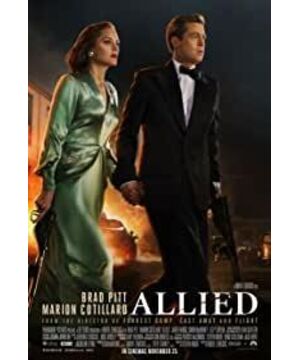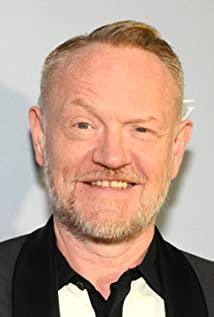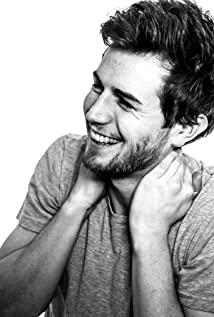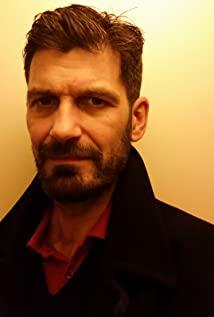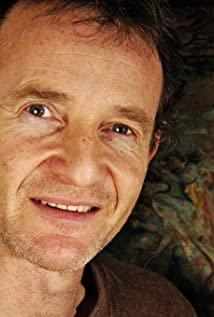The main thing I want to say is some thoughts about the language of the film.
As a veteran director, Zammicis has always been known for his advanced attempts in real-life 3d movies, which is to lose a bunch of motion capture works such as the company's "Christmas Express" and "Beowulf". He had just finished the investigation and claimed a full-fledged situation, and the real-life motion capture began to be reborn from "Avatar" and began to mature. Of course, this is related to Zammicis’s wrong direction. His characters are all imitation humans, and the "Uncanny Valley" effect allows the audience to play in minutes. But what I want to say is that Zammicis has been introducing new technologies to explore the development of film narrative. Just like his most famous "Forrest Gump", people can see that special effects can be used in addition to explosions and interstellar wars. The opening shot of the famous feather, and Forrest Gump shaking hands with the president in the real documentary, introduced the special effects technology from dreaming to the language of the movie for an unprecedented time, giving narrative a brand-new approach and possibility. This is related to his origin. After all, he and Spielberg are close friends of the same age. The directors of their generation have the traditional spirit that many of our directors lack, that is, the traditional academic shooting methods. They are deeply influenced by classic movies. They pay attention to the coordination of scene scheduling and camera positioning, and the external atmosphere of the scene and the echoing performance of the characters' hearts, that is, they are more pursuing the characteristics of the original film. It does not belong to the stage drama, nor the rapid consumption of the television network era, but also pursues the elegance of the film itself.
The reason why a movie has become a movie and flourished for a hundred years is because it has its own set of unique expression methods, which belong to the movie itself. Just like the famous montage from bones to spaceships in "2001", there are also metaphors of life that follow the falling feathers like Forrest Gump, close to the soldiers who disappeared on the charging horses in "War Horse", and even the unprecedented car galloping in "World War" long shoot. These are the unique grammar of directors, the grammar of storytelling. And this kind of grammar that is worth savoring becomes more and more precious in this age. More and more films are shot straight, with fast editing, powerful music and special effects firmly occupying the audience's nerves. The audience does not need to feel and experience, but only need to lean on the seat and enjoy the sex, isn't it cool? This is also the reason why directors like Zammicis and Spielberg are becoming more and more likely to have mixed reputations, because those rumbling movies make you high no matter what, and these classic movies often require the audience to sink their hearts. Come and experience. It's kind of like an art film, isn't it? But they are not making art films. What they have been doing is commercial films. It’s just that in this era and audiences have become more and more simple and direct, leading to the fact that today’s commercial films even have foreplay flirting and soft light filters. No need, go straight to the bow.
For example, a couple quarrels in the bedroom. In general art films, no matter how the actors move, my camera does not move, and the audience has plenty of time to observe the environment and the performance of the characters. So this requires more subjective intervention by the audience. Once the intervention is completed, the audience's resonance for the scene will be very strong. This is the trick of the art film, and it has not changed much. When it comes to commercial movies, directors like Zammicis will make full use of various film methods, such as the division of space between the mirror and the mirror to metaphor the changes in the relationship between the two. Use), the space division of the room itself, and the scheduling of characters' positions to strengthen the drama scene. This is a classic academic theory practice. Now, more and more commercial movies directly choose to directly follow the characters, shake the scenes, and quarrel emotionally. Is it effective? efficient. At that moment, the audience's emotions were indeed aroused. But after this orgasm, there is no aftertaste. You feel the emotions, but you are not touched. Maybe you were moved by the actor's performance, but at the director level, it was thin and failed.
I have always said that movies by old-school directors such as Zammicis Spielberg are chewy movies, because their works reflect the uniqueness of the film as a separate art category, which is endowed by the means of directors. That's only the cinematic experience that only belongs to the category of movies that can only be realized with the coordination of the camera's positioning and montage in the drama scheduling. It's like in "League of Spy" that Pete went to kill the owner of a jewelry store. Instead of following him in the shop, he waited in the car with Marion, letting the audience feel the anxiety and worry, a classic from many years ago. The form of expression? ! When he was about to flee, Pete couldn't start the plane outside the heavy rain. Marion took care of the children. He looked at the hangar in the distance. Then there was still rain and couldn't start the plane. Then he saw that there was still no car in the hangar. The sound of rain, and then there was a car passing by in the distance, but fortunately it was not on our side, and then Jeep and army truck appeared. At this time, the plane started...what a good rhythm and narrative! The two got close for the first time. On the sand dunes, the dust storm struck in the distance. For them, tomorrow's action is still unclear. What a metaphorical comparison, and even better, they decided not to go. The camera calmly Rotating, as the sound of the sandstorm outside hitting the window of the car became louder and louder, the interweaving of the two people in the car became tighter and tighter. What a nice environment to set off the emotional climax! Before the release, these were very common narrative expressions, but today they are very rare. These are the director's re-creation of the script, and all the elements that the director allows him to mobilize, from the environment to the characters to the sound effects to the camera positions, all serve the narrative. Note that it is a narrative, not a story. The story is written in black and white on the script. No matter how wonderful it is, it is the screenwriter’s credit. The director can choose the most direct way to express, the film can still be wonderful, but this is tantamount to giving up his responsibilities as a creator.
"League of Spy" may not be squeezed into Zammicis's excellent works, but at least he has not lost his style. Here I would like to mention a very impressive work by Zammicis, "Behind the Lies". It is a scary ghost movie (yes, it turned out to be a ghost) that he rarely shoots. There are some weird shots and many more. The thriller film expression method of the Hitchcock era. For example, when the female protagonist exploded that the male protagonist was driving away from her home, she shot a camera behind the car under the car and saw her home away from danger. As a result, a male protagonist's leather shoes fell off. This TM is more terrifying than a blood-stained person chasing a car. This is the charm of movie narration: I don't point it through, but you know everything, and it comes with an effect bonus.
"League of Spy" has mixed reputation probably because this era is really different. The audience's requirements have become more and more straightforward. MTV advertising pictures and fast-paced editing may really attract audiences. Moreover, Pete's own blockbuster attributes have caused the audience to come with the mentality of watching blockbuster films of World War II. This story, which gives you a weekend to test whether you want to kill your wife, is probably more suitable for the production attributes of independent films. In any case, I still hope that the charm of film language will not be forgotten in this era of fast-moving advertising. Commercial movies can also be full of wisdom and "chewing".
View more about Allied reviews


